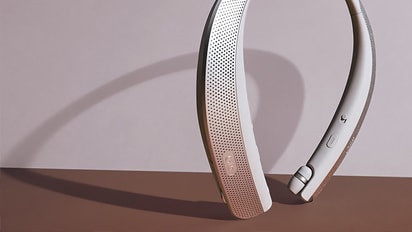Note: Some Settings, Menus, or Icons may differ from that of your device depending on your software version and wireless service provider.
Phones may become warm during extended use. This is normal behavior when on a call for an extended amount of time, transmitting data, streaming or playing music or games. Under these conditions, the phone uses a large amount of power which may cause it to generate more heat.
Most of our devices are equipped with Battery Temperature Protection Feature. This feature is designed to protect battery, and main board. If the battery gets overheated, the phone will automatically turn off. When the phone is powered back on, a message will pop up alerting that the phone was powered off for your safety.
- Is the phone is overheating while charging?Yes No
-
-
Ensure you are using the the original battery and charger or a compatible LG branded battery and charger.
If you are using a non-LG battery or charger, it is recommended obtain a genuine LG battery or charger compatible with your model. This can be obtained from your carrier or from theLG Part store. -
If your phone has a removable battery, ensure the gold contacts on the device and battery are in good conditions.
-
If the charger is loose in the port, it may not connect properly and thus release additional heat. Check the phone with another charger or your charger with another phone to determine if its the culprit is the phone charging port of the charger being used.
-
Ensure not to over charge your phone past 100% as this may damage the battery if exposed for prolonged time.
Cleaning tips:
-
Never use acetone or any chemicals to clean your phone.
-
Never attempt to disassemble your phone past removing the battery.
-
Always use a soft dry cloth to clean the phone.
-
To avoid accidental damage do not place or keep the phone in a pocket. use a carry case for your phone.
-
Avoid using your phone hen its raining. In addition, avoid using or keeping the phone in areas where is will be exposed to high levels of humidity like the beach or fog areas.
-
do not use after market phone chargers.
-
Keep all caps and covers closed (chargers, memory card, and USB) on the phones at all times to keep dust out of these ports.
Note: Using chemical cleaners can damage the phones coating or cause liquid damage to the handset.
-
- Do you have a case on your phone?Yes No
-
Check your case:
Remove the case from your phone, allow it to cool off, and test if under your normal use, see if your phone still over heats. The case you have, as good as it looks, your phone needs to radiate the heat away, and the presence of that case made from an insulated material prevents this, it’s like exercising in a duffle coat.
Next -
Check the charging port
-
Check your charging port, to see if its coming loose, or cracked or damaged, if the charger is loose in the port, it may not connect properly and thus release additional heat. Check the phone with another charger or your charger with another phone to determine if its the culprit is the phone charging port of the charger being used.
Inspect your battery (If your phone has a removable battery)
-
Ensure the battery is not cracked or leaking
-
Ensure the battery is not inflated
-
Ensure the gold connectors on the phone and batter are not damaged or corroded.
Check battery usage (Android only)
-
Check your battery usage by going to Settings
> General Tab >
Battery
-
See what app consumes the most battery, that may be what causes the phone to overheat. If you are not using the app, close it out.
-
Check the battery saver which helps save battery by reducing the phones performance and restricting what apps can do in he background. Select a model and choose what features to restrict.
- Extended allows to enter Edit mode to further alter the Max brightness, Disable Always-on display, Disable vibrations, and Restrict background data.
- Maximum allows the background and other visual elements to be black, Wi-Fi Bluetooth and Location may be turned off.
-
To ensure you receive notifications from important apps, select the apps in Settings
> General Tab >
Battery > Power saving exclusion
-
-
Next
Check Your settings
-
Screen brightness, The brighter the screen the hotter it may become.
-
Camera or streaming apps, the higher the resolution, the hotter the phone may become.
-
Live wall papers, the longer the screen has to respond, the hotter it may become.
-
-
Next
Check apps running in the background (Android only)
-
Android users are susceptible to apps running in the background and drawing on resources, such as CPU and Wi-Fi or mobile Internet. If apps are allowed to run in this way, things can heat up. You just need to close the app once you are done, or if you prefer, you can search the play store for a app killer or task manager or task killer.
-
-
Final Steps
-
If the above steps have not resolved the issue, try to power the phone off and back on.
-
You can perform a factory data reset that will wipe the phone by going to:
Android:
Open Setting> General Tab >
Restart & reset > Factory data rest > Reset phone > Delete all.
Basic phone:
press the Left Soft Key (Menu)> Settings
> Phone Settings > Reset Settings > Master Clear.
-
If the phone is still overheating, check with your carrier for insurance options or you are able to send the phone to our repair facility.
Note: By performing a factory data reset, All Data Will Be Wiped From The Device. While any data stored in your Google Account will be restored, all apps and their associated data will be uninstalled.
-












